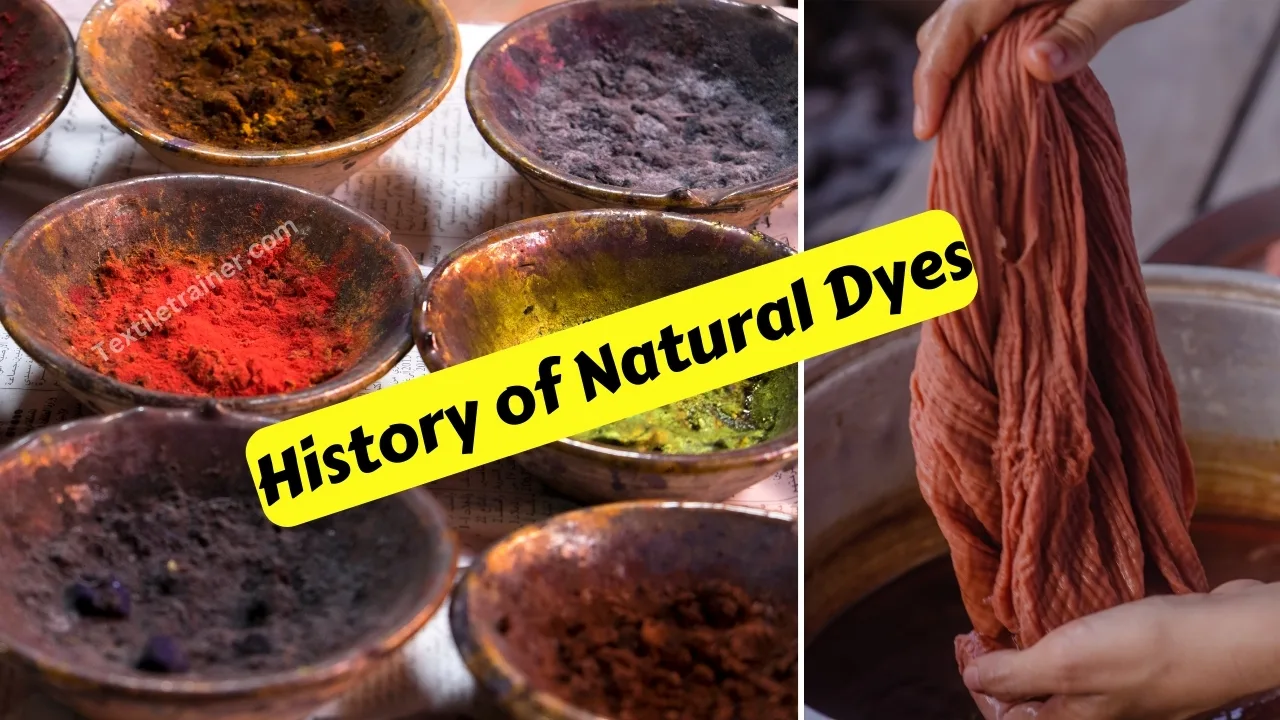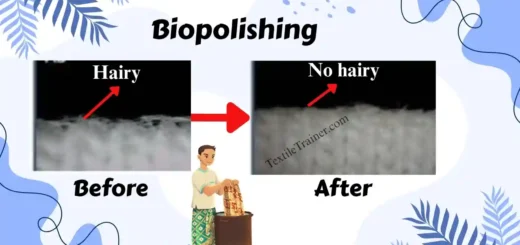An Ecofriendly Dyeing Process : Using Sawmill Bio-Waste
1. Introduction:
The process of coloring textiles is a complex one that involves the interaction of dye molecules with fibers. Since synthetic dyes pose environmental hazards, natural dyes derived from plants, animals, and minerals have gained in popularity. In spite of their ecofriendly, natural dyes can exhibit poor wash fastness on fabrics, which necessitates further research. In this article, I will present an ecofriendly dyeing process. Here, I will show you cotton fabric dyeing with sawmill bio-waste. This process also can be called sustainable dyeing process.
You may read: Extraction Natural Dye from Butea Monosperma : 3 Easy Step/ Palash
2. What is an Ecofriendly Dyeing Process?
The method of coloring textile materials that minimize environmental impact compared to the traditional dyeing process is called the ecofriendly dyeing process. People around the world are very concerned about the environment today. Many researchers are looking for sustainable dyeing process to traditional dyeing methods. Here, I will show sustainable dyeing process as well as ecofriendly dyeing process.
3. Material and Methods
3.1 Material
In this dyeing process, we used cotton scoured and bleached single jersey knitted fabric. We also collected mahogany sawdust from local sawmill. Other chemical and auxiliary is used from our lab. We dyed sample in four variations to check color fastness properties. Sample identification of surface modified is shown below table.
| Sample types | Sample identity |
| No modification + dyeing | S1 |
| Modification with potassium alum +dyeing | S2 |
| Modification with copper sulfate + dying | S3 |
| Modification with iron sulfate + dyeing | S4 |
3.2 Dye extraction process from sawmill bio-waste:
A schematic representation of the dye extraction process for natural dye derived from mahogany sawdust is illustrated in the figure 1.

- At first, mahogany sawdust is exposure to sunlight for 8 hour in order to remove all moisture.
- Than measure 250 g dried sawdust and placed into a stainless steel pot.
- Now, take 3 L water and mixed with mahogany sawdust.
- Keep the solution over night.
- Then, these solutions heated at 1000c for 30 min.
- Subsequently, the heated mixture was allowed to cool.
- After cooling the solution, then again heated at 1000C for 30 min.
- Now, keep the solution for cooling.
- Finally, filtered the solution to remove residual waste.
3.3 Mordanting process
We know that, natural dye has no affinity to fabric. Mordant is used to increase the affinity of natural dye to fabric. Mordanting process is given below:
- Here, we used three types of mordant. We applied mordant at a concentration of 5g/L.
- We took 100 ml water in dyeing pot and mixed mordant.
- Now, load the fabric into the dyeing pot.
- We treated the fabric at 1000 C for 60 min.
- After mordanting time over, we unloaded the dyeing pot from the machine.
- Subsequently, the fabric was carefully pressed and dried in air-dryer. Ensure uniform drying across the fabric surface.
- Now, we our sample is ready for dyeing.
3.4 Dyeing process using extract dye from sawmill waste
- Our dyeing ratio was 1:20. Our sample weight was 5 g. So we took 100 ml dye solution extracted from sawmill waste.
- Loaded the sample into the dyeing pot.
- Now, we dyed the sample at 1000 c for 60 min.
- Subsequently, the dyeing liquor bath was gradually cooled to 400 C.
- Then, unloaded the sample and rinse.
- Dried the sample in air dryer.
- To eliminate any residual unfixed dye from the surface of sample, we treated the sample with standard soap solution. Amount of soap was 0.5 gm/L
- Finally, rinse the sample and dried.
3.5 Final Shade

4. Result and Discussion ( Colorfastness Properties)
4.1 Colorfastness to Wash
| Sample | Color change | Color staining | |||||
| Acetate | Cotton | Nylon | Polyester | Acrylic | Wool | ||
| S1 | 3 | 4 | 4-5 | 4-5 | 4-5 | 4-5 | 4 |
| S2 | 3-4 | 4 | 4-5 | 4-5 | 4-5 | 4-5 | 4 |
| S3 | 3-4 | 4 | 4-5 | 4-5 | 4-5 | 4-5 | 4 |
| S4 | 3-4 | 4 | 4-5 | 4-5 | 4-5 | 4-5 | 4 |
The results indicate that most colored samples ranged from moderate to excellent colorfastness to washing. As an example, S1 had a color change rating (CC) of 3, which indicates adequate wash fastness. However, all mordanted samples had CC ratings of 3–4. Color change ratings have increased slightly due to metals in mordanting agents, which may influence dye-fiber interactions during washing. Additionally, the staining in color (SC) ratings remained consistent across all samples, indicating minimal color transfer. Colorfastness to wash dyed cotton fabrics is promising, but bio-waste extracts are underrated as natural dyes.
4.2 Colorfastness to perspiration (acid)
All dyed specimens showed very good (4-5) to excellent (4-5) fastness properties for Colorfastness to perspiration in acidic and alkaline conditions.
| Sample | Color change | Color staining | |||||
| Acetate | Cotton | Nylon | Polyester | Acrylic | Wool | ||
| S1 | 4 | 4 | 4-5 | 4-5 | 4-5 | 4-5 | 4 |
| S2 | 4-5 | 4 | 4-5 | 4-5 | 4-5 | 4-5 | 4-5 |
| S3 | 4 | 4 | 4-5 | 4-5 | 4-5 | 4-5 | 4 |
| S4 | 4-5 | 4 | 4-5 | 4-5 | 4-5 | 4-5 | 4 |
4.3 Colorfastness to perspiration (alkali)
| Sample | Color change | Color staining | |||||
| Acetate | Cotton | Nylon | Polyester | Acrylic | Wool | ||
| S1 | 4 | 4 | 4-5 | 4-5 | 4-5 | 4-5 | 4 |
| S2 | 4 | 4 | 4-5 | 4-5 | 4-5 | 4-5 | 4 |
| S3 | 4 | 4 | 4-5 | 4-5 | 4-5 | 4-5 | 4 |
| S4 | 4-5 | 4 | 4-5 | 4-5 | 4-5 | 4-5 | 4 |
4.4 Colorfastness to water
| Sample | Color change | Color staining | |||||
| Acetate | Cotton | Nylon | Polyester | Acrylic | Wool | ||
| S1 | 4-5 | 4 | 4-5 | 4-5 | 4-5 | 4-5 | 3 |
| S2 | 4-5 | 4 | 4-5 | 4-5 | 4-5 | 4-5 | 4 |
| S3 | 4-5 | 4 | 4-5 | 4-5 | 4-5 | 4-5 | 3 |
| S4 | 4-5 | 4 | 4-5 | 4-5 | 4-5 | 4-5 | 2-3 |
Almost all fabric samples showed good to excellent colorfastness to water, both in terms of staining and color change.
4.5 Colorfastness to saliva
| Sample | Color change | Color staining | |||||
| Acetate | Cotton | Nylon | Polyester | Acrylic | Wool | ||
| S1 | 4 | 4-5 | 4-5 | 4-5 | 4-5 | 3 | 4-5 |
| S2 | 4 | 4-5 | 4-5 | 4-5 | 4-5 | 4 | 4-5 |
| S3 | 4 | 4-5 | 4-5 | 4-5 | 4-5 | 4 | 4-5 |
| S4 | 2-3 | 4-5 | 4-5 | 4-5 | 4-5 | 4 | 4-5 |
There were some differences in the results of colorfastness to saliva. Despite the excellent fastness to CC of without mordanted and alum mordanted samples, those mordanted with copper (II) sulfate and iron (II) sulfate displayed 3 (moderate) and 2–3 (slightly fair). The color staining rating for all mordanted samples remained consistently high (4 to 4– 5, indicating excellent to very good).
4.6 Colorfastness to rubbing and light
| Sample | Dry rubbing | Wet rubbing | Lightfastness |
| S1 | 4 | 3-4 | 2-3 |
| S2 | 5 | 4-5 | 3 |
| S3 | 5 | 4 | 3 |
| S4 | 5 | 4-5 | 3 |
Colorfastness to rubbing in the dry state of all samples was excellent, indicating minimal color transfer or alteration during mechanical abrasion. However, a slight decrease in colorfastness was observed in the wet state, suggesting that moisture may worsen the rubbing process, albeit to a lesser extent. The without mordanted sample (S1) received a fair rating 2 or 3, indicative of noticeable fading or color change upon exposure to light. Other samples, on the other hand, had a light fastness rating of 3, indicating a modest improvement. As a result of the interaction between the dye, mordant, and fiber, color retention and stability under light exposure may be improved.
Conclusion:
Here is a sustainable dyeing process as well the ecofriendly dyeing process using natural dye that is extracted from sawmill waste. You can follow this whole process of dyeing with sawmill waste. If you have any questions, please let me know through the comments.
Reference:
- Tarikul Islam, Adnan Maroof Khan, Md. Rezaul Karim, Shahin Hossain, M. A. J. (2024). Assessing the dyeing efficacy and environmental impact of cotton fabric dyed with sawmill bio-waste extracts and metal salts. March, 1–13. https://doi.org/10.1002/pls2.10136
- Gupta, V. K. (1997). Manufactured Fibre Technology. New York: Chapman & Hall.
- Hossain, M. F. (2015). Practice of Textile Coloration, Volume-I. Dhaka: Books Fair Publications.
- Kabir, D. S. (2016). Chemistry of Dyes & Pigments. Dhaka: Books Fair Publications.
You May Read:



